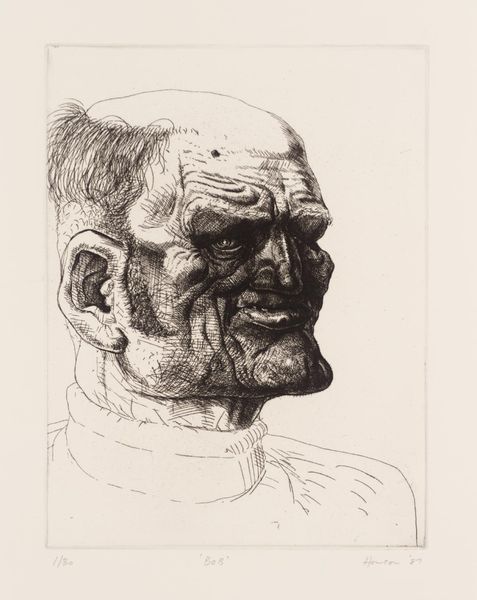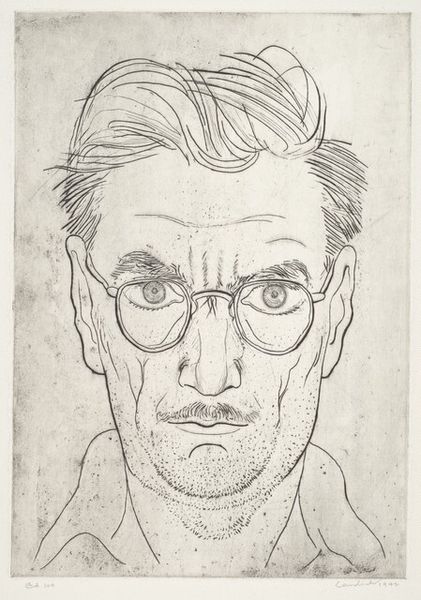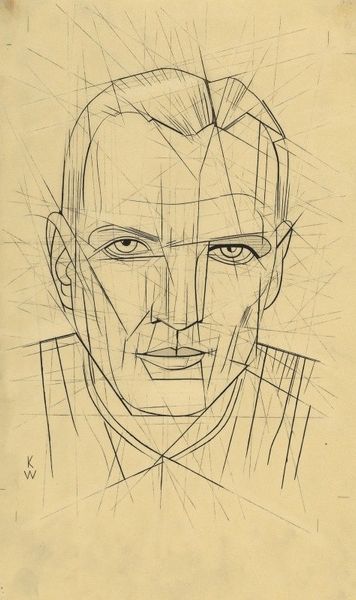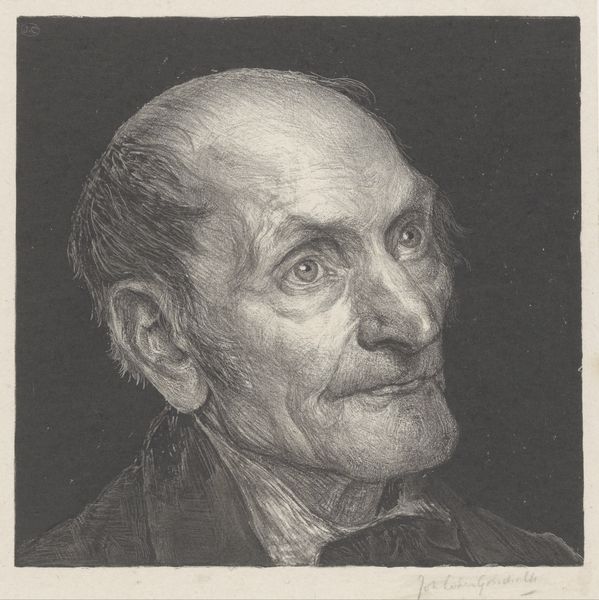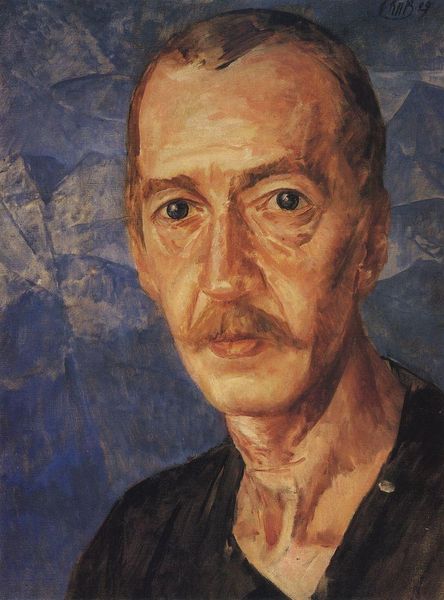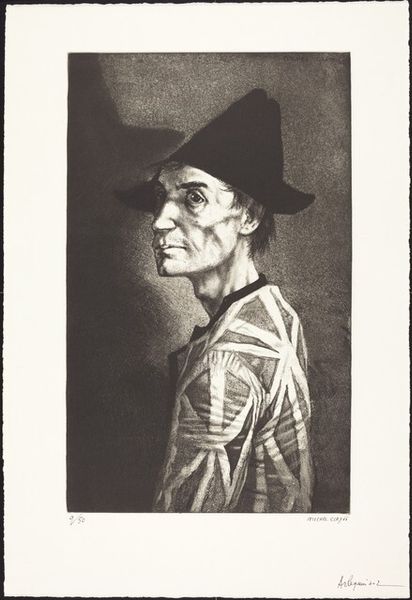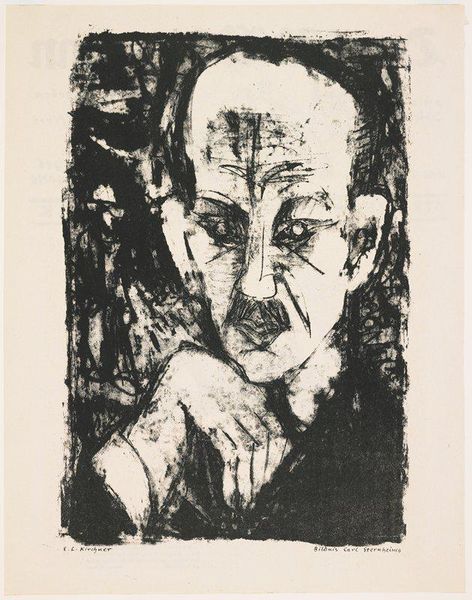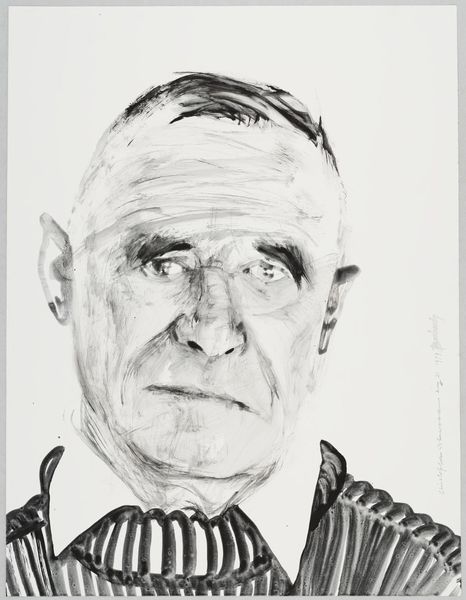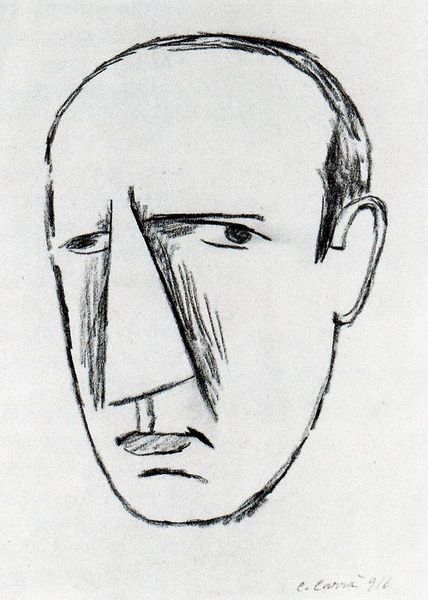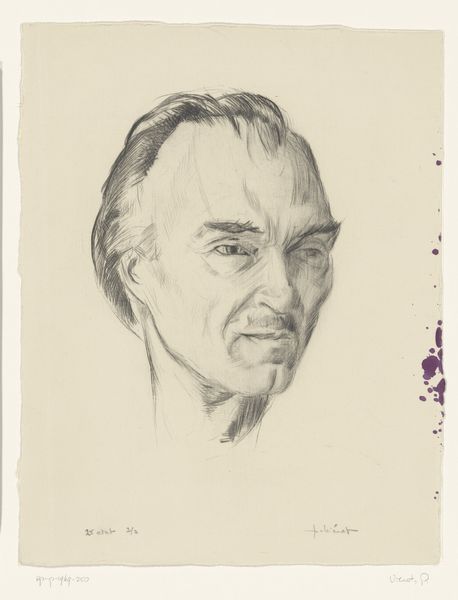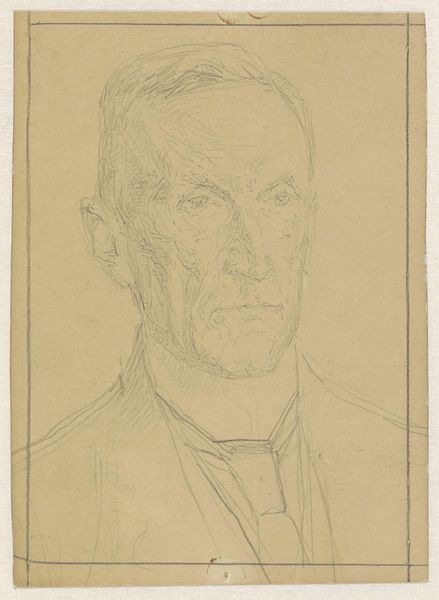
photography
#
portrait
#
self-portrait
#
low key portrait
#
portrait image
#
portrait
#
portrait subject
#
photography
#
male portrait
#
portrait reference
#
portrait head and shoulder
#
facial portrait
#
modernism
#
fine art portrait
#
digital portrait
Dimensions: image: 38.1 x 38.1 cm (15 x 15 in.) mat: 65.25 x 59.69 cm (25 11/16 x 23 1/2 in.)
Copyright: National Gallery of Art: CC0 1.0
Curator: We’re looking at Irving Penn’s "Self-Portrait in Cracked Mirror" from 1986, a gelatin silver print. The monochrome and stark lighting immediately give it a weighty presence. What stands out to you initially? Editor: That shattered reflection immediately evokes themes of fragmentation, the breaking of the self. The cracks disrupting his face, are they suggesting fractured identity? It feels laden with symbolism about the artist's inner turmoil. Curator: Fascinating point. Considering Penn's background in commercial photography, this experimentation with self-portraiture in 1986 might indicate a departure. It could signal a moment of artistic recalibration, of deconstructing his own established image, quite literally by breaking a mirror. Editor: Yes, think of the mirror as a longstanding symbol of self-reflection, and the cracks now disrupting the image call into question the stability and truth of that reflection. He's forcing us to see the unreliability of self-perception. Mirrors, reflections—they play important roles across art history, of course. Here, the fragmentation suggests not a single unified self, but multiple selves, or even a disrupted sense of being. Curator: It makes you think about the printing process itself, doesn't it? This photograph's tangible qualities are not diminished, even with its conceptual aims. Consider the labor required to get the composition and lighting just right, let alone incorporating a literal shattered mirror as a material component. Editor: Absolutely. And it’s a particularly compelling act to photograph oneself via this imperfect reflective material. What cultural significance does the damaged mirror hold? Discarded luck, perhaps? Curator: Good question. Given Penn's commercial work, could he be alluding to an obsolescence of images or ideals? Are we seeing him critique photographic mediums, too? It definitely provokes consideration. Editor: Right. In essence, we’re left to confront not just Penn’s likeness but an allegory of selfhood in decline or transition. I’m seeing symbols for much more than simply the individual. Curator: I agree. Considering Penn’s established legacy, seeing this piece as part of a broader production of a craftsman rather than focusing on the fractured imagery expands the discussion in meaningful ways. Editor: Yes, this dive really offers potent points to think about his established images, self-perception, and fractured identities in material objects!
Comments
No comments
Be the first to comment and join the conversation on the ultimate creative platform.
